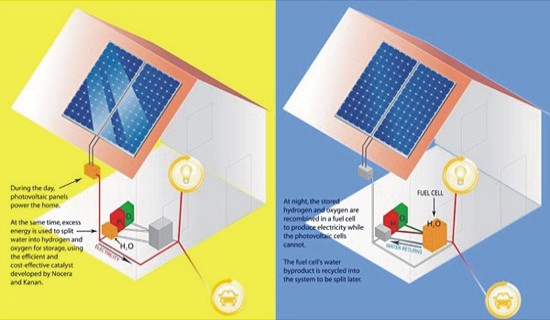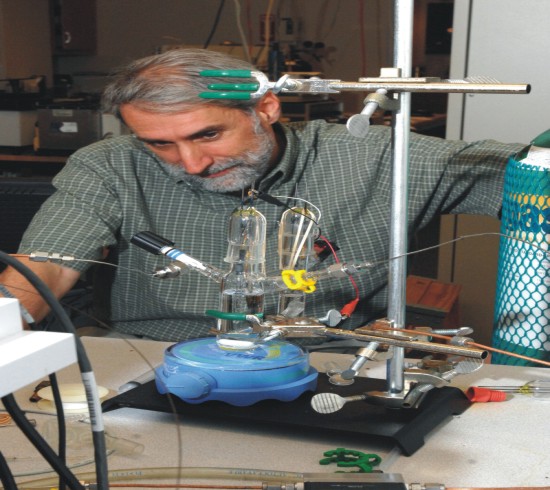
MIT chemistry professor Daniel Nocera and his team of researchers say that a catalyst used in coincidence with cheap photovoltaic solar panels, could lead to inexpensive, simple systems that uses water to store the energy from sunlight, enabling the electrolysis system to function efficiently at room temperature and at an ordinary pressure. Inspired by the photosynthesis performed by plants, Nocera and Matthew Kanan, a postdoctoral fellow in Nocera’s lab, have developed an unprecedented process that will allow the sun’s energy to be used to split water into hydrogen and oxygen gases. Aiming to make solar energy usable in abundance during the day and hydrogen at night to run a fuel cell to generate electricity.

This discovery could also help transform electricity generated through solar energy into a fuel, making it more cutthroat with fossil fuels. That could prove to be a major landmark in clean technology, clearing the roadblock on the long road to fossil fuel independence. Also note that Nocera’s breakthrough is in making it is cheaper and simpler to split water by electrolysis. Expensive machines have long been able to do the same thing, but only by using iridium alloys or exotic nano particles.
It’s funny how people call hydrogen the fuel of the future when in reality it’s expensive and energy consuming. However, with the new catalyst at least the energy needs and cost of running the process overall are much lower. And that could make a standard solar array on a home a viable source of electricity for creating all the hydrogen a household would need. The project was funded by the National Science Foundation and by the Chesonis Family Foundation, which gave MIT $10 million this spring to launch the Solar Revolution Project, aiming to make the large scale deployment of solar energy within 10 years.
Via: Dvice




